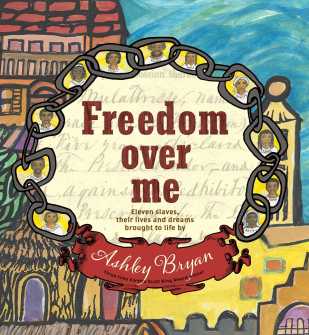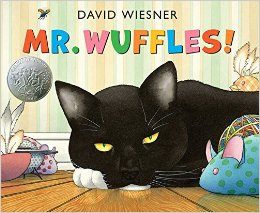 Freedom Over Me
Freedom Over Me
By: Ashley Bryan
Genre: Historical Fiction
Published: Atheneum/Caitlyn Dlouhy Books – New York, NY, September 13th, 2016
Awards: Newbery Honor Book – 2017, Coretta Scott King Author Honor Book – 2017, Coretta Scott King Illustrator Honor Book – 2017
Theme: As documents from an estate fall into the hands of the author, he takes a spin on them in a very interesting way. The documents he uses as the premise of this book are real slave auction papers and an appraisal from a plantation that each of these eleven slaves were apart of. The author explores the over arching theme of value – both monetarily and through life experience and dreams of becoming free.
Summary: The story is told through the perspective of eleven slaves, apart of the Fairchilds Estate, which is soon to be sold. Each individual has an incredible skill and talent, but one that is not valued as they are only seen as property. However, the text gives a voice to the voiceless and their dreams are heard through free verse writing.
Response: How did the book make you feel? How does it relate to your own experiences? Did you make any connections to other books you have read?
This book was very emotional for me as I was reading. The author created a story for each of these individuals and gave them a craft, a story, and a voice through their dreams of freedom. It was truly marvelous the way the words fell on the page – written in free verse form. At the end however, it is where it all began to sink in – the small glimpse of reality that I can gather from all of this, when the real documents were put into the book.
Ironically, I just finished reading Brown Girl Dreaming. These texts were related in ways they shouldn’t have been – African Americans, 100 years later, still struggling to find their place in the world and remaining voiceless because of fear.

 Pancho Rabbit and the Coyote
Pancho Rabbit and the Coyote
 Ada’s Violin:The Story of the Recycled Orchestra of Paraguay
Ada’s Violin:The Story of the Recycled Orchestra of Paraguay


 Author/Illustrator: Aaron Decker
Author/Illustrator: Aaron Decker
